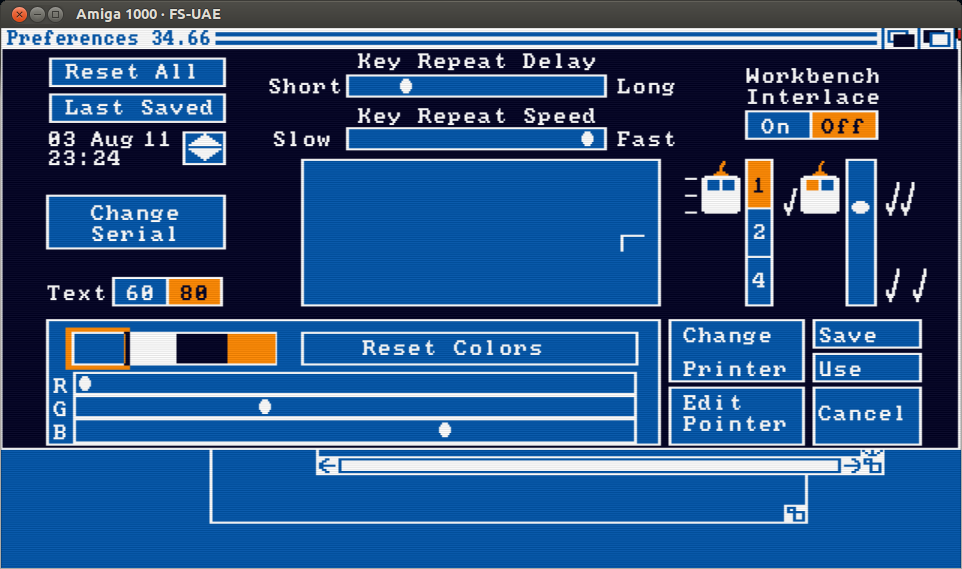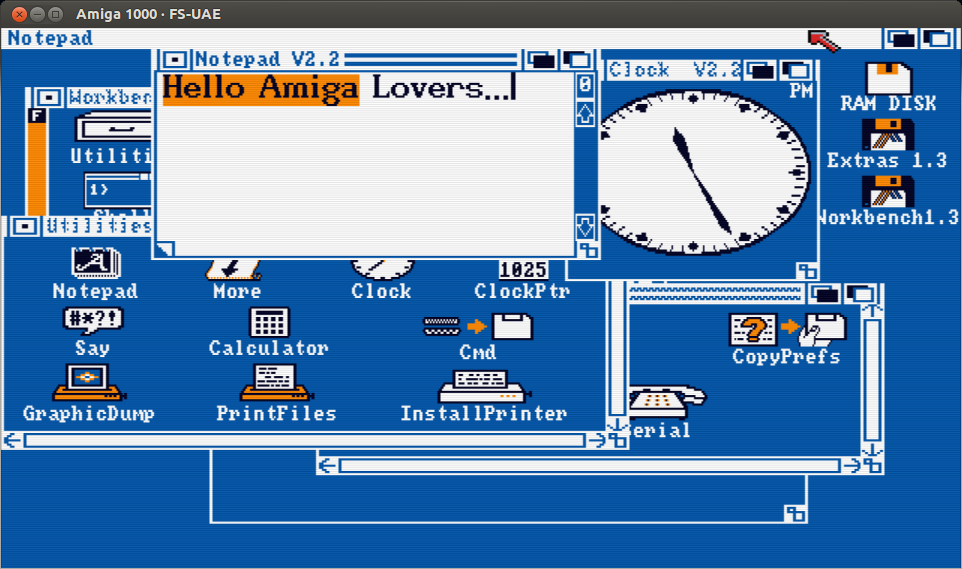I've been playing around with the Atari ST environment and getting interested again in learning more about 16 bit computing. I think this is in part because it was an era that I completely skipped, moving from my Atari 800XL computer to a 486SX20 (with the occasional usage of 286 and 386 machines).
The Atari ST is fascinating in part because of the community of folks that are still writing software for it. There are still folks making a GPLed version of the "Tramiel Operating System" (TOS) called EmuTOS. I'm looking at the OS code to get a sense of how these things work, and combined with the Hatari emulator you have a powerful environment for exploration.
I've also found the community very interesting, and have subscribed to a few mailing lists. It feels like folks are just genuinely interested in preservation and exploration of these machines. It's a very nice feeling.
Which reminded me of my last jaunt into the Amiga in 2015. I got curious about what has been going on with that community.
What I managed to find (in part because I've been looking for it, mind you) is a lot of anger in the Amiga community. I find a lot of folks pissed off at Commodore's management because they managed to take something that had potential and really fucked things up.
It's that frustrated greatness that I found interesting, in part because as a Linux user and ~sometime~ evangelist I'm very sympathetic to the idea that if only the masses knew what I knew then we'd have a better computing environment. I totally get that.
So whenever I fire up an Amiga I have that expectation of frustrated greatness. I've tried on several occasions to dig into this machine and figure out what I, as a non-Amiga user, missed about this system.
It's when I get there that I wonder what folks found so compelling.
 The Amiga Preferences Screen. Only Lotus Notes looks worse.
The Amiga Preferences Screen. Only Lotus Notes looks worse.
 Amiga Workbench: Functional desktop but everything lacks polish.
Amiga Workbench: Functional desktop but everything lacks polish.
To be clear: the Amiga was a revolutionary computer from a hardware perspective. The hardware really set the bar high for what a 16 bit computer could do, especially with 2D graphics, sprites, and sound. There was a lot of careful thought that went into the design decisions for the hardware. The Amiga was designed by several ex-Atari VCS / Home Computer engineers who knew how to take their knowledge to the next level.
But the OS is far from what I'd consider a great OS. Technically it's impressive with its ability to do multitasking. But where it really misses the mark is in the user interface. I've tried several iterations of Workbench (the 1.x series is shown above, but I've also tried 2.x and 3.x) and they all feel like they were solely designed for the engineers who programmed it. Whenever I start the famous "Boing" demo I have no clue how to get out of it. When I first started it I had no idea how to view it until I found that you can "pull" the Workbench bar down to view it.
I know it's rich of me to say that Linux is more user-friendly than an Amiga, but at least the GNOME project funded some usability studies. I'm not sure Commodore did, and if they did I'm wondering if they paid attention.
I'm also comparing modern OS design with a computer that has been moribund for over 20 years (30 if you count using Workbench 1.x), so I decided to see what AROS (the AROS Research Operating System) has been up to. AROS is the community-driven clean-room implementation of the AmigaOS. There are several versions to try, but the one that is simplest to get running is IcarOS, which can be used as a LiveCD inside of a virtual x86 environment. I have to say that AROS is one of the fastest booting operating systems I have ever seen. The GRUB timeout takes longer than the OS to get started, and even my old Atari800 might not boot as quickly as this thing does (at least the x86 version. I'll talk about the 68K version in a second).
Unfortunately AROS also suffers from the decisions of the past. The interface is clunky, with scads of options that only make sense if you've been using an Amiga for decades and a layout that is cluttered in a way that only engineers would find appealing. The programs that are included on the demonstration disc are interesting for a bit, but have limited appeal to someone not immersed in the quirks of Amiga interface design.
And this is what is so frustrating about the Amiga: there's a lot of really good ideas here that are buried in decades of mismanagement (both from Commodore and its successive stewards, and from its clunky user interface). As a Linux user I've seen how a user interface can make or break a system and it's heartbreaking to see something that had such potential bury it amidst poorly-designed collections of buttons and sliders. If someone were to employ me and sit me down in front of an Amiga I would try to find a text editor on the thing so I could update my resume. For all of the crowing about technical superiority that the Amiga folks do the one thing that still boggles me is how anyone can call this sort of interface superior. I promise I will listen with sympathetic ear if anyone can point to a program that has a clean and well-thought out interface that works well and doesn't overload the user with options.
I know there are Amiga folks out there pining for the success that robbed the Amiga, and I whole-heartedly sympathize with that desire. But it's not hard to see why most Amiga games boot directly into the game without bothering with the Workbench: because the Workbench just takes up memory, and adds nothing to the experience.
I look forward to whatever revolution awaits the Amiga, but much like the play "Waiting for Godot" I doubt it's ever going to show up.